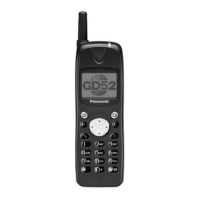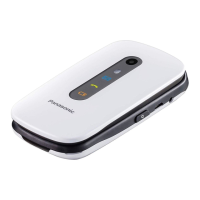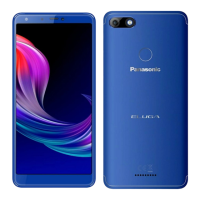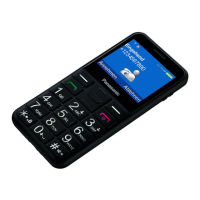TECHNICAL DESCRIPTION
PMCD030901C8 Section 4 Issue 1
Service Manual – 19 – Revision 0
4.7. Bluetooth Module
Bluetooth module U500 provides short range (typically 10 metres or less) connectivity from the handset to Bluetooth-enabled
devices such as headsets, car kits, personal computers for transferring voice and data.
Figure 4.10: Bluetooth Module
The Bluetooth module connects to the MODEM-2 UART in CALYPSO+ which provides the control and data interface to the
baseband CPU. The 4-wire UART connection (TXD, RXD, RTS, CTS) uses the HCI(H5) protocol with error detection and re-
transmission.
A PCM audio connection from U500 connects via the CALYPSO+ MCSI-2 port to the DSP. This connection is 4-wire and uses
13-bit linear PCM. The DSP switches audio to the baseband interface (Bluetooth headset mode) or to the voiceband interface
(Bluetooth cordless mode).
In standby mode, U500 runs from its internal slow speed clock. In active mode, U500 runs off a 13 MHz clock derived from the
VCXO. To enable the 13 MHz clock, U500 asserts CLK_REQ which will interrupt CALYPSO+ to enable the VCXO. U500 is
powered from SYREN 2.8 V regulator VMEM and derives 1.8 V from this source to power its RF circuits. VRIO powers the
baseband I/O interface voltage rails.
U500 resets itself at switch on. Additionally, a CALYPSO+ GPIO connects to RST_B to allow software control of Bluetooth
resetting. Under normal conditions, CALYPSO+ holds U500 in reset until its power rails and the 13 MHz clock have been
enabled.
The 6-byte Bluetooth Address is contained in the Retained Data Store (RDS) which is programmed during manufacture. It is
loaded into U500 at power on.
10695-1
BLUETOOTH
MODULE
U500
U100
CALYPSO+
CPU
U120
SYREN
(PART)
GSM
RF
ADC
DAC
VCXO
÷2
VOICEBAND
BASEBAND
DSP
U120
SYREN
(PART)
GPIO
CLK
REQ
MODEM-2
UART
MCSI-2
PCM AUDIO
13 MHz
VCXO_EN
26 MHz

